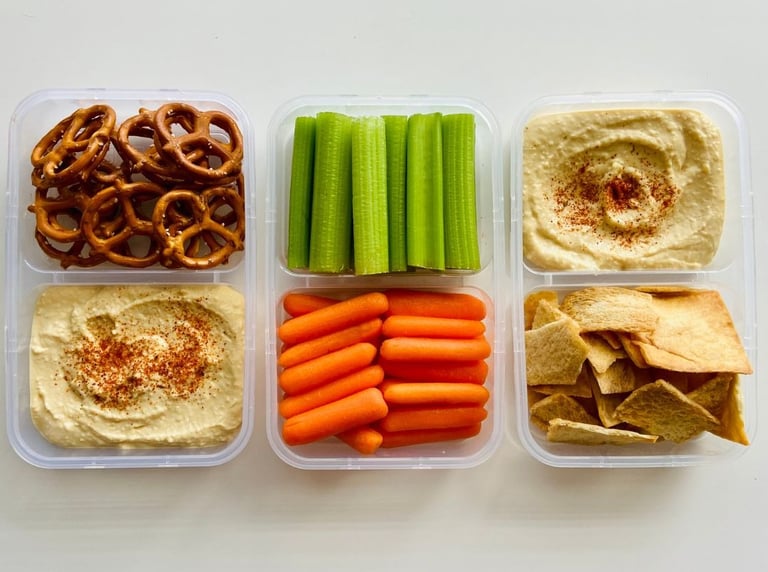Mindful and Healthy Snacking
The first step to mindful and healthy snacking is to create an environment that supports your healthy eating habits.
How much calories should you eat daily? Find out here...


Let’s be honest — snacking is fun and can be quite addictive. Food manufacturers don't make it any easier with their cheap, salty, savoury, and sugary snacks that are always within reach on store shelves. This makes it even harder to break the habit. As I mentioned in my previous post, snacking is something I must consciously manage, especially since I tend to snack frequently, much like many other professionals who spend a lot of time working on computers.
To ensure that my snacking habit doesn't jeopardize my health and weight management goals, I follow a few steps that I think might be helpful for you too. Here they are:
1. Stock your pantry and workplace drawers with healthy snacks. You're more likely to reach for what is available, so if you surround yourself with healthy options, you'll make healthier choices. The first step to mindful and healthy snacking is to create an environment that supports your healthy eating habits.
2. Preplan and portion your snacks. Just like meal planning, preplanning your snacks is great for health and weight management. When you plan ahead, you make better choices about the quality and quantity of the food you pack. By deciding on your snacks in advance, you'll choose healthier options and control portion sizes more effectively.
3. Include your snacks in your daily calorie count. Snacking can add a significant number of calories to your diet, so it's important to track these calories just like you do with your main meals. For effective weight management, every calorie counts, whether it comes from a meal or a snack.
4. Make your own snacks. Instead of relying on prepackaged store-bought snacks, prepare your own healthy alternatives. For instance, to avoid high-calorie chips, I slice up carrots or cucumbers and pack them in a small container for a "work and eat" snack. These options are much lower in calories and healthier overall.
5. Read food labels. While you can't make all your snacks from scratch, you can make better choices by reading food labels. Avoid snacks high in calories, sugar, sodium, or fat, and opt for those with higher fibre and protein content.
6. Snack when you're hungry. Food is fuel to help us function daily, so eat when you're hungry, not out of boredom or because others are eating. This can be challenging—it's something I still struggle with—but with practice and self-control, it's possible.
7. Stay hydrated with water. Sometimes, what we perceive as hunger is actually thirst. Drinking water can help you feel full and give you time to determine if you're truly hungry. So, when you feel like snacking, drink some water first. If you're still hungry afterward, choose a healthy snack.




